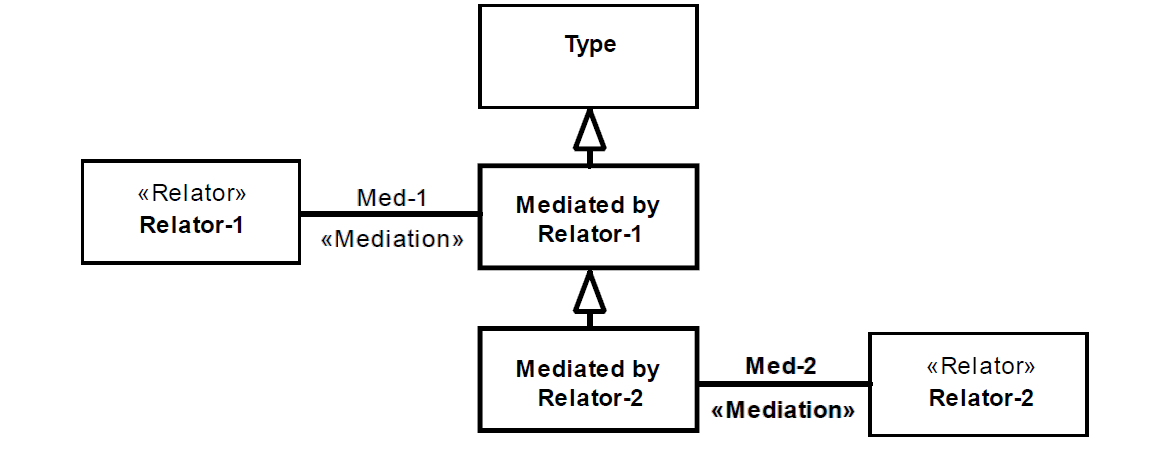MultDep anti-pattern
- Full name
Multiple Relational Dependency
- Type
Logical; Scope
- Feature
Relator
- Description
An object class directly connected to two distinct «Relator» types through «Mediation» associations. The relators may not be direct or indirect specializations of one another.
- Justification
Externally dependent types, like all roles, require on dependency to characterize them. Whenever more than one is provided, it can indicate redundancy, scope issues and/or modeling an extra relation between the relators that characterize the dependency.
- Contraints
Let R be the set of all Relator in a MultDep occurrence and isAncestor(c1,c2) the binary predicate that returns true if class c1 is a direct or indirect super-type of class (c2,c1):
\[\forall r1, r2 \in R, \lnot isAncestor(r1, r2) \ \land \ \lnot isAncestor(r2, r1)\]
- Examples

- Refactoring Plans
[New/Mod] Unordered optional dependencies: Create a direct subtype of Type for each dependency. (In the example below, all dependencies were set as optional for Type)

[New/Mod] Ordered optional dependencies: Create a hierarchy line for dependencies, which an instance of Type can only acquire after others. (In the example below, all dependencies were set as optional for Type).

[New] Create dependency between relators: Create formal relations connecting relators that depend on one another. This solution generates an occurrence of AssCyc (which the user should be analyzed) and an occurrence of UndefFormal (which the user can ignore).
References:
Prince Sales, Tiago. (2014). Ontology Validation for Managers.